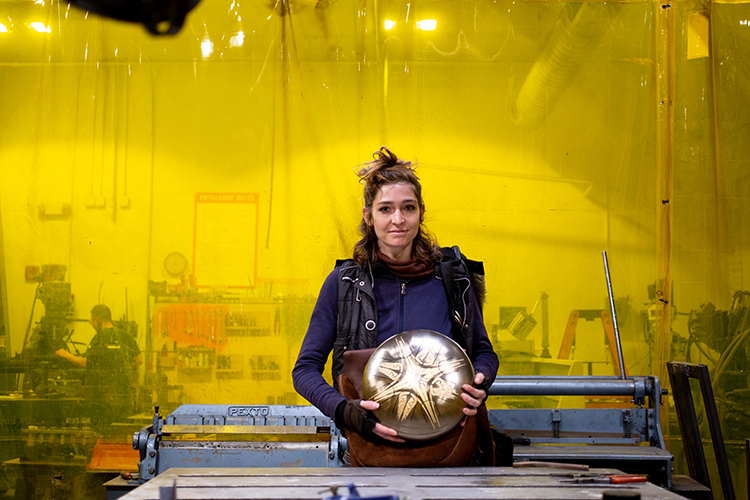Photo: Margo Reed
by Claire Marie Porter
(full story can be found here)
Scott Keeley began playing didgeridoos to treat his sleep apnea.
“Didgeridoo players don’t snore,” he was told by his doctor.
The didgeridoo is one of the world’s oldest instruments. It’s in the wooden brass family and was invented by indigenous Australians. An experienced “didge” player can make a myriad of sounds, from animal imitations to explosive pops, along with the omnipresent droning hum that sounds like an alien abduction.
The name of the instrument is considered to be an onomatopoeic Western attempt to describe its sound: “didjerry, didjerry.”
Traditionally, it’s made from termite-eaten eucalyptus or agave tree trunks, says Keeley. One myth suggests the instrument is best made by burying a log underground and allowing termites to hollow it out.
Termites are still an important part of the process, though they don’t do the work alone. The best trees are those that are dead and termite-eaten, but still standing, says Keeley. Subterranean termites, or white termites, prefer darker, more humid areas, so they do most of their munching towards the center of the tree.
There’s little margin for error. If the tree has been dead too long, it will fall apart—if it’s too green, the instrument will split within a year. The rest is a mystery, says Keeley.
“Only one in 100 is an excellent didge, and we don’t know what makes it that way,” he says.
Keeley has gotten very good at finding the perfect dead standing tree.
You want the bark flaky, he explains, not completely sloughed off. Traditionally, the root of the tree would form the bell of the instrument, creating a natural flare.
The best didge-making trees are those that have had a hard life, he says. The best instrument he’s made to date was from an 80-foot-tall, dead black birch.
When he began to cut at the roots, he noticed that they had fought to get their nutrition, growing around a rock. This made it so the base of the tree already had a natural bend, and when Keeley knocked it over, an enormous puddle of termites poured out.
“I really ruined their day,” he says. But it made the perfect didge.
The process is straightforward: Keeley preps the outside, then sands the trunk with a belt sander, tapering the wood to the top. He uses tools and materials from
NextFab South Philadelphia, where he works as a patent agent.
After treating the outside of the trunk and cleaning up its roots, Keeley slices the whole thing lengthwise and carves it like a dugout canoe. He shapes the mouthpiece and glues the two halves back together, then sands, polishes and plays.
The whole process takes about four days.
There’s a final mystery in the making—a maker can’t know what key the didge will be in until it’s complete. It depends on the growth of the tree and the hollowing work of the termites. The majority of Keeley’s end up being in the keys of E or F major.
Keeley’s didgeridoo is about as tall as he is, around 5 feet and 8 inches.
He plays it on a still, sunlit day in the
NextFab courtyard space, placing one foot on top of the other—eyes focused, lips pursed—as he creates a low drone that mingles with the sounds of construction next door.
It took him about six months to learn circular breathing.
“My technique was to just make some kind of hooty-tooty noise while breathing,” Keeley says.
“I’ve only found three other didge-makers on the East Coast. So, I guess that makes me the third-best didgeridoo maker here,” he says, laughing.








